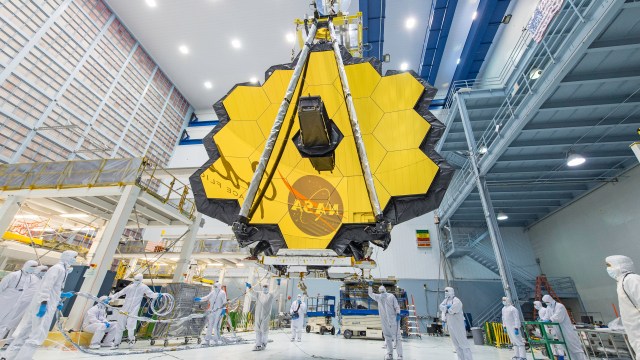Ask Ethan: Why can’t I see Mercury without a telescope?
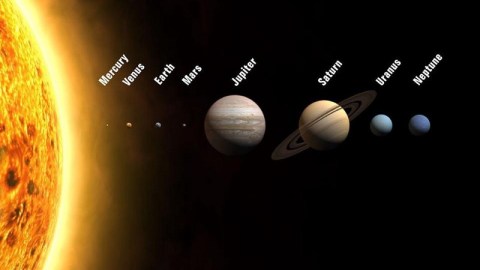
The most elusive naked-eye planet is downright impossible to view for billions of us on Earth.
“I long ago abandoned the notion of a life without storms, or a world without dry and killing seasons. Life is too complicated, too constantly changing, to be anything but what it is. And I am, by nature, too mercurial to be anything but deeply wary of the grave unnaturalness involved in any attempt to exert too much control over essentially uncontrollable forces.” –Kay Redfield Jamison
Since ancient times, humans have known of five planets — or “wandering stars” — in the sky: Mercury, Venus, Mars, Jupiter and Saturn. Each of them appears to move against the backdrop of stars from night-to-night, rather than staying in the same fixed position like the other points of light do. But while Venus, Mars, Jupiter and Saturn are all easily visible to the naked eye, most of us have never even seen Mercury. This is thoroughly dissatisfying to Erik Arneson, who wants to fix that:
I have been sitting on the coast watching the sun set through the thinnest sliver of clear sky on the horizon. I’m struggling with a question: how can one see Mercury with the naked eye? I know it’s possible, but how can I observe it enough to know it’s a “wandering star”? It’s the only classical planet I’ve never seen. Help!
Mercury is by far the most difficult naked eye planet to see, and there’s a very good reason why.
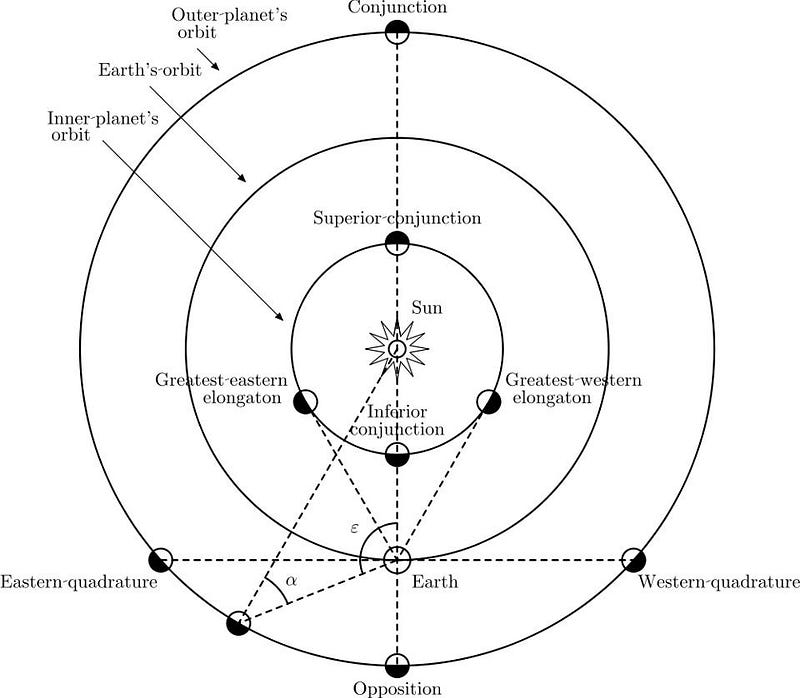
Mercury, unlike the other planets, never appears very far away from the horizon in the night sky. From Earth’s perspective, that’s because Mercury is the closest planet in its orbit with respect to the Sun. That on its own wouldn’t be such a big deal; the problem is that we’re so much farther out than Mercury is! When Mercury is at its maximum distance (aphelion) from the Sun, it’s actually 70 million kilometers away from it, or 47% of the typical Earth-Sun distance. Unfortunately, this means even in its ideal configuration, Mercury is only 28° away from the Sun as seen from Earth.

That ideal configuration, by the way, almost never occurs. Mercury’s orbit around the Sun is quite elliptical, and when it’s at its closest distance (perihelion) from the Sun, it’s only 18° away from the Sun in its ideal configuration. Most of the time, of course, Mercury isn’t in its ideal configuration, known as maximum elongation. Most of the time, it’s closer to the Sun than that, and this poses a problem for professional and amateur astronomers everywhere.
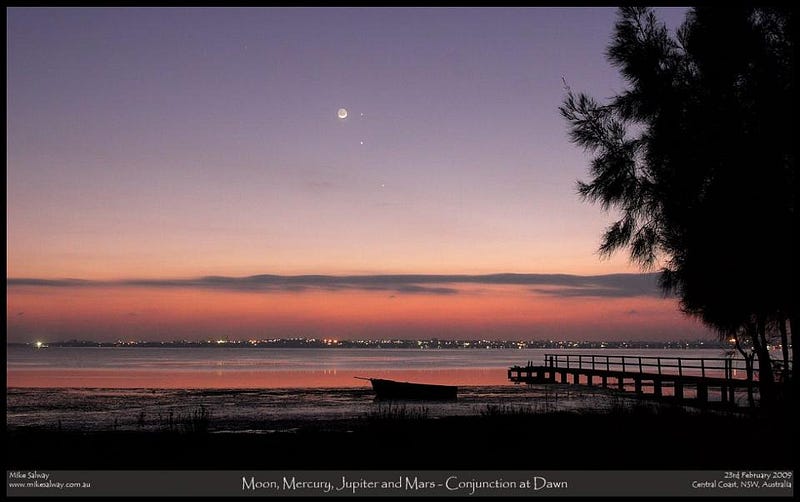
The reason is the simplest one of all: astronomical viewing of most objects is practically impossible during the day. In order to see the overwhelming majority of astronomical objects, you not only need for the Sun to set, you need for the sky to get dark. The sky reaches total darkness when the Sun drops about 18° below the horizon, but you can see Mercury when the Sun’s only about 6° below the horizon under ideal conditions. This is because Mercury, during its maximum elongation, is actually quite bright: about as bright as Canopus, the second-brightest star in the entire sky. When the stars begin to come out, so does Mercury.

But this combination of Mercury being close to the Sun and the Sun needing to drop a few degrees below the horizon is a big problem for many would-be Mercury observers across the world. The problem, you see, is that Mercury, the Sun and the Earth all orbit in roughly the same plane: the ecliptic. And the Sun doesn’t simply rise in the east, travel straight overhead at the zenith, and then set in the west. Rather, it travels in a curved path, and that curved path gets more severe the higher your latitude gets.
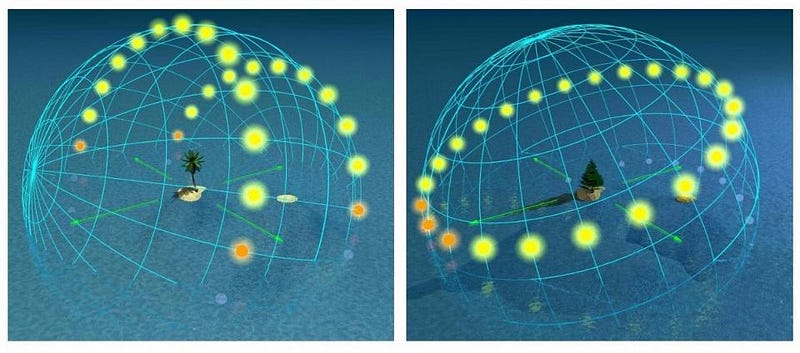
For those of you above the 45th parallel (in either hemisphere), that’s a big enough problem that you’re pretty much destined to never see Mercury, even if you have a clear view of the horizon and a clear evening/morning sky. If you were closer to the equator, though, viewing Mercury would be a snap. In fact, those of you who live close to the equator — ideally, about 10–15° south of it — will have a wonderful chance to do exactly what Erik is asking about during the final week of July and the first week of August this year.

Mercury reaches a maximum elongation of 27.2° on July 30th, where it will be visible in the evening sky. From 10–15° south latitude, the Sun will appear to set almost perfectly vertically, meaning that when the Sun reaches 18° below the horizon and we have true darkness, Mercury will still be 9° above the horizon. If you watch it from approximately July 20th to August 9th, you’ll see Mercury wander, providing great evidence that it is, in fact, a planet.

So how can you ever see it if you live closer to the poles than the equator? Well, those of you who’ll be on the west coast of the United States on August 21st will have your opportunity to go see a total solar eclipse from right at the 45th parallel! The skies get dark during the day a little after 10 AM depending on where you are, and the bright star Regulus will be very close to the Sun at that time, and visible during the day during totality. Just below it, closer to the horizon, will be Mercury, while above it, farther from the horizon, will be Mars. It’s the perfect time to see them all.

The reason Mercury is so elusive for so many of us is mostly because of our latitude on this world. How can you see something when the way the Sun orbits the Earth prevents the sky from darkening until the planet you’re looking for is below the horizon? There are going to be times where you can see it better than others, but your best bet is to get closer to the equator, and to look to the west after sunset when Mercury’s at maximum eastern elongation, or to the east before sunrise when Mercury’s at maximum western elongation. You have to plan ahead, especially when the Sun is in the way, and that doesn’t just extend to seeing Mercury from Earth.

The Hubble Space Telescope is the most powerful observatory ever launched into space. From low Earth orbit, it’s given us our best views of all the worlds in our Solar System short of actually traveling across the great astronomical distances. But there’s a world Hubble has never viewed: Mercury. The reason? Its close proximity to the Sun carries with it a risk: if you accidentally let direct sunlight into your telescope mirror, you’ll fry the optical systems. Even with more than 20° to play with, the administrators who assign telescope time have never approved a Hubble mission to view Mercury… or even Venus, owing to this risk.
So think about it this way: just by traveling close to the equator at the right time in Mercury’s orbit, you can not only view the innermost planet in our Solar System and watch it wander, you can do what even humanity’s greatest telescope won’t.

And if you’re absolutely hellbent on trying to see Mercury from a high northern latitude without budging, here’s your best attempt: between the hours of 7:00–7:15 AM on January 1st, 2018, just before sunrise. Look to the east, where Mars and Jupiter will be close together, and follow the line they make back towards the horizon, close to the soon-to-be-rising Sun. If you have a clear eastern horizon, you just might see a single point of light poking out between Jupiter and the horizon; that will be Mercury for you. But try taking a trip closer to the equator if you can; it’s the easiest solution of all!
Send in your Ask Ethan questions to startswithabang at gmail dot com!
Ethan Siegel is the author of Beyond the Galaxy and Treknology. You can pre-order his third book, currently in development: the Encyclopaedia Cosmologica.




